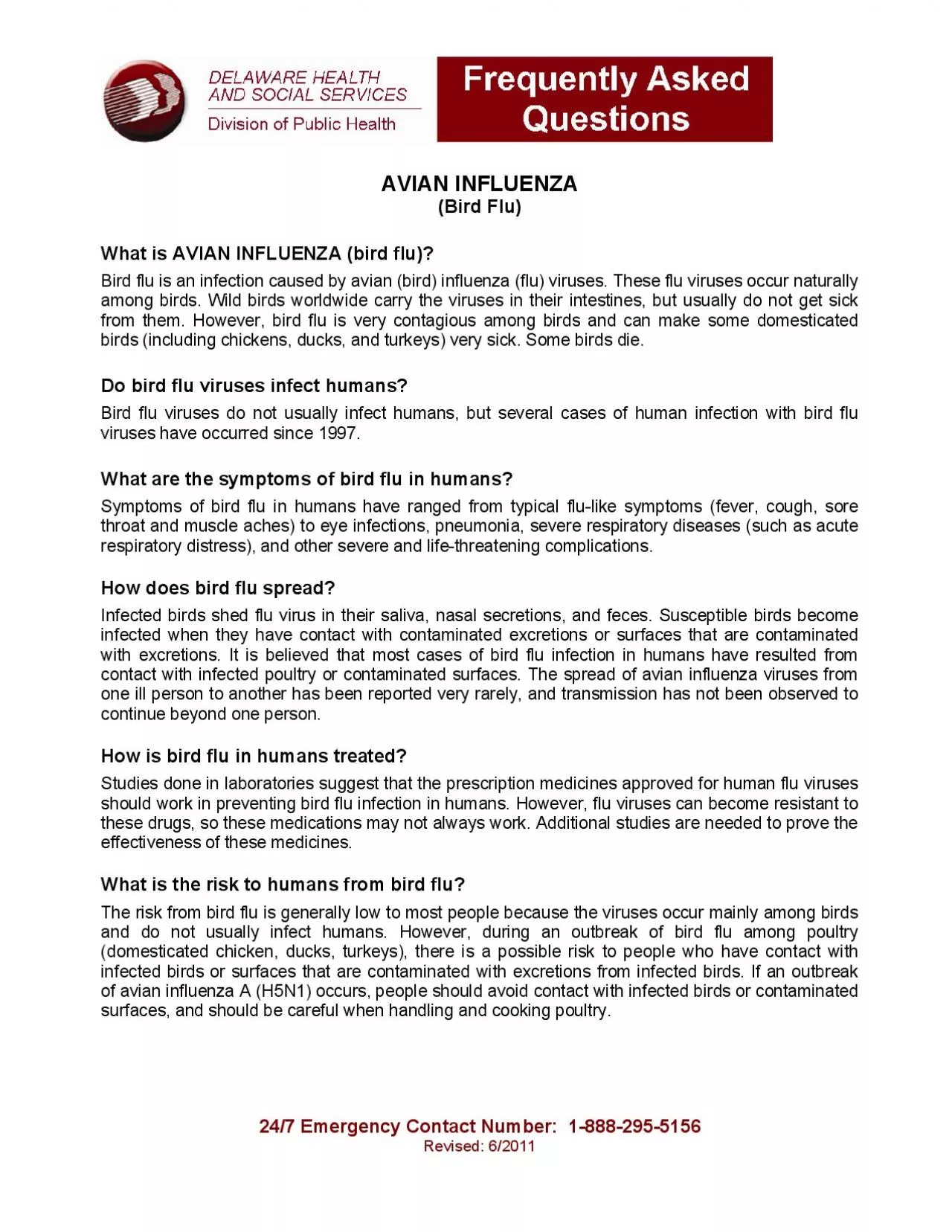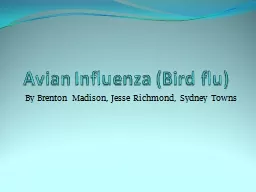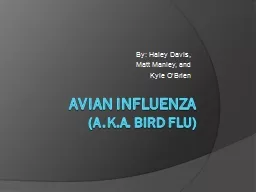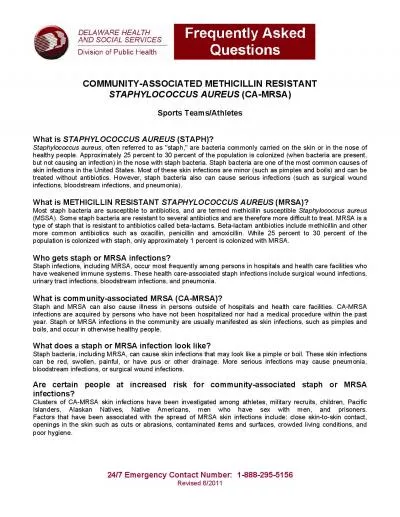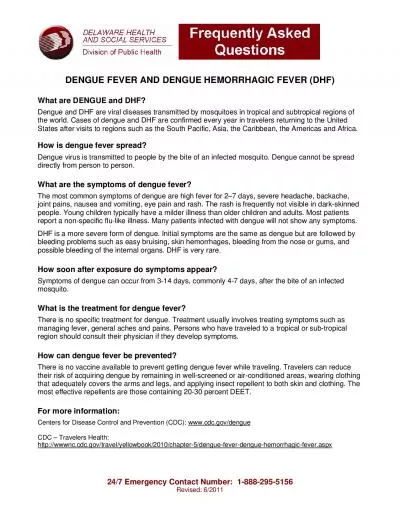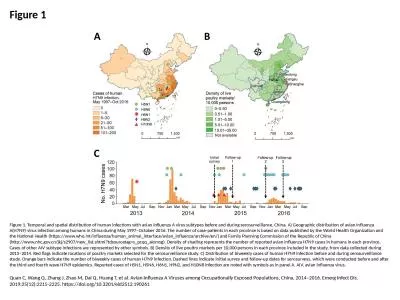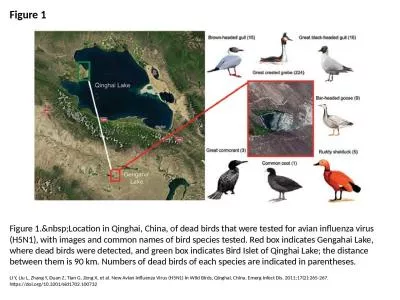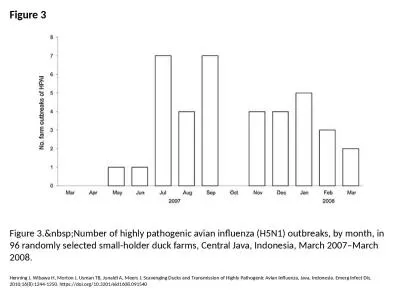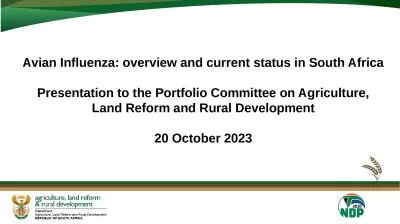PDF-247 Emergency Contact Revised 62011 AVIAN INFLUENZA What is AVIAN
Author : ceila | Published Date : 2022-08-16
247 Emergency Contact Revised 62011 What is the bird flu that has been reported in Asia and Europe Outbreaks of avian influenza have occurred among poultry in eight
Presentation Embed Code
Download Presentation
Download Presentation The PPT/PDF document "247 Emergency Contact Revised 62011 AVIA..." is the property of its rightful owner. Permission is granted to download and print the materials on this website for personal, non-commercial use only, and to display it on your personal computer provided you do not modify the materials and that you retain all copyright notices contained in the materials. By downloading content from our website, you accept the terms of this agreement.
247 Emergency Contact Revised 62011 AVIAN INFLUENZA What is AVIAN: Transcript
Download Rules Of Document
"247 Emergency Contact Revised 62011 AVIAN INFLUENZA What is AVIAN"The content belongs to its owner. You may download and print it for personal use, without modification, and keep all copyright notices. By downloading, you agree to these terms.
Related Documents

